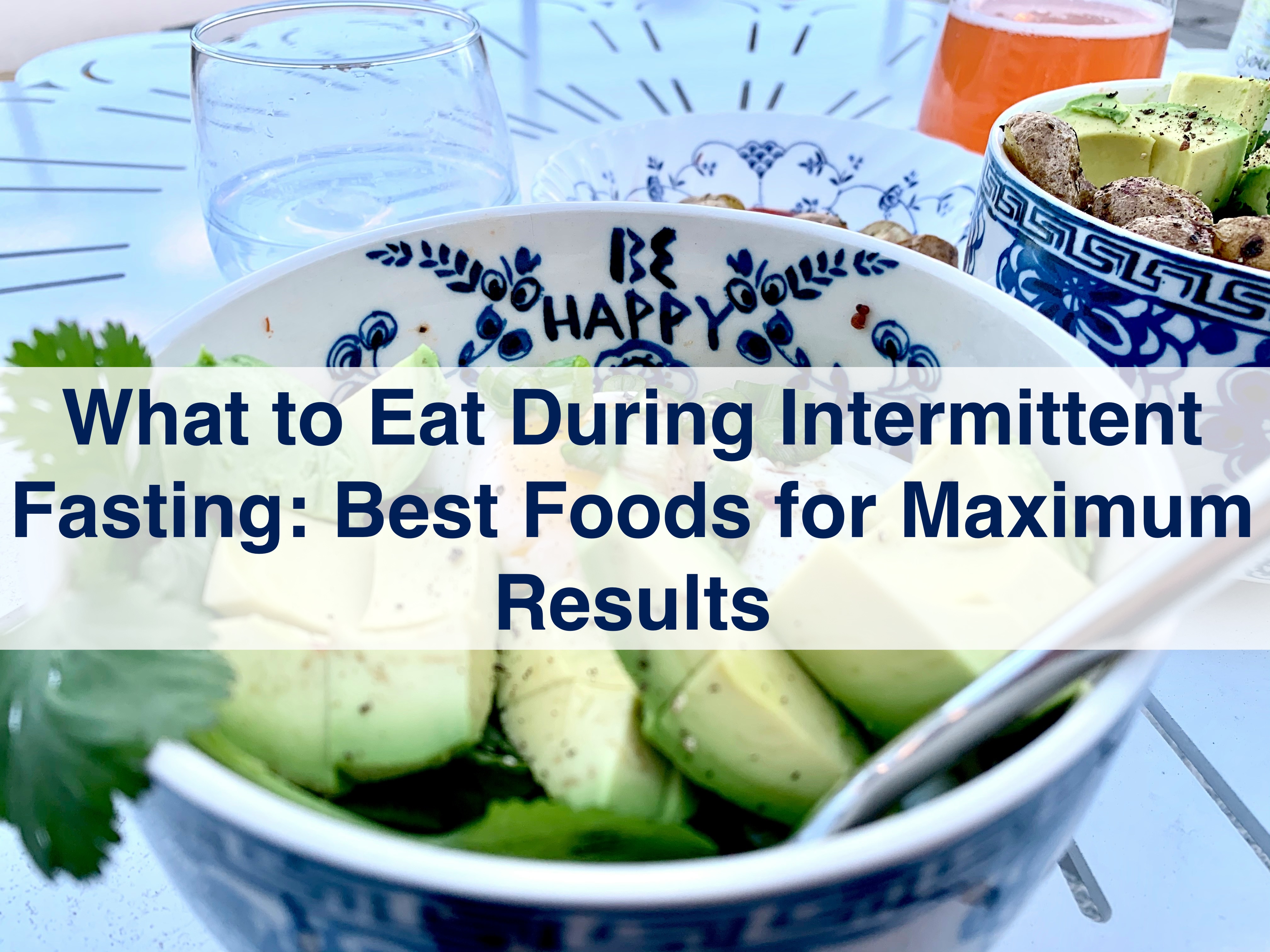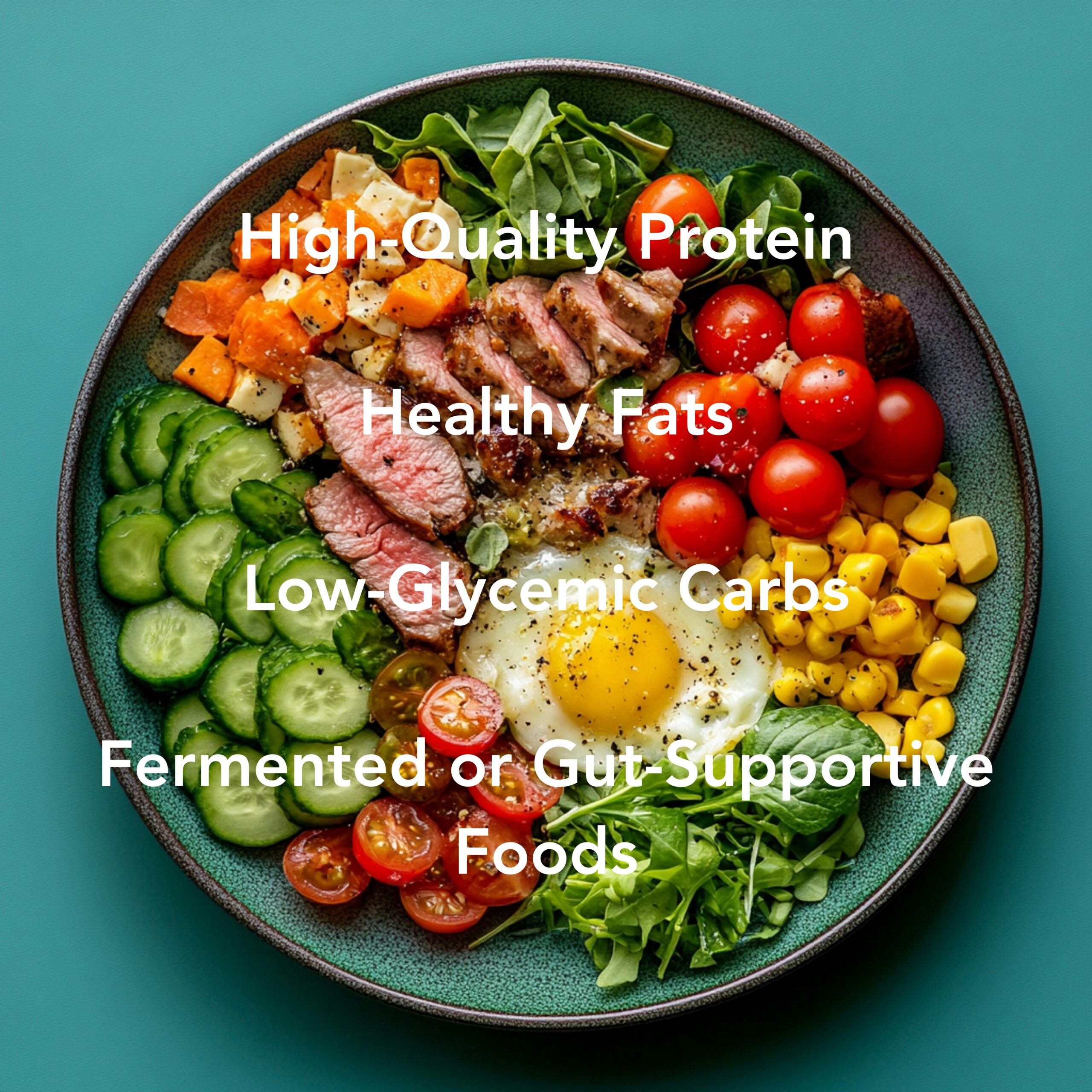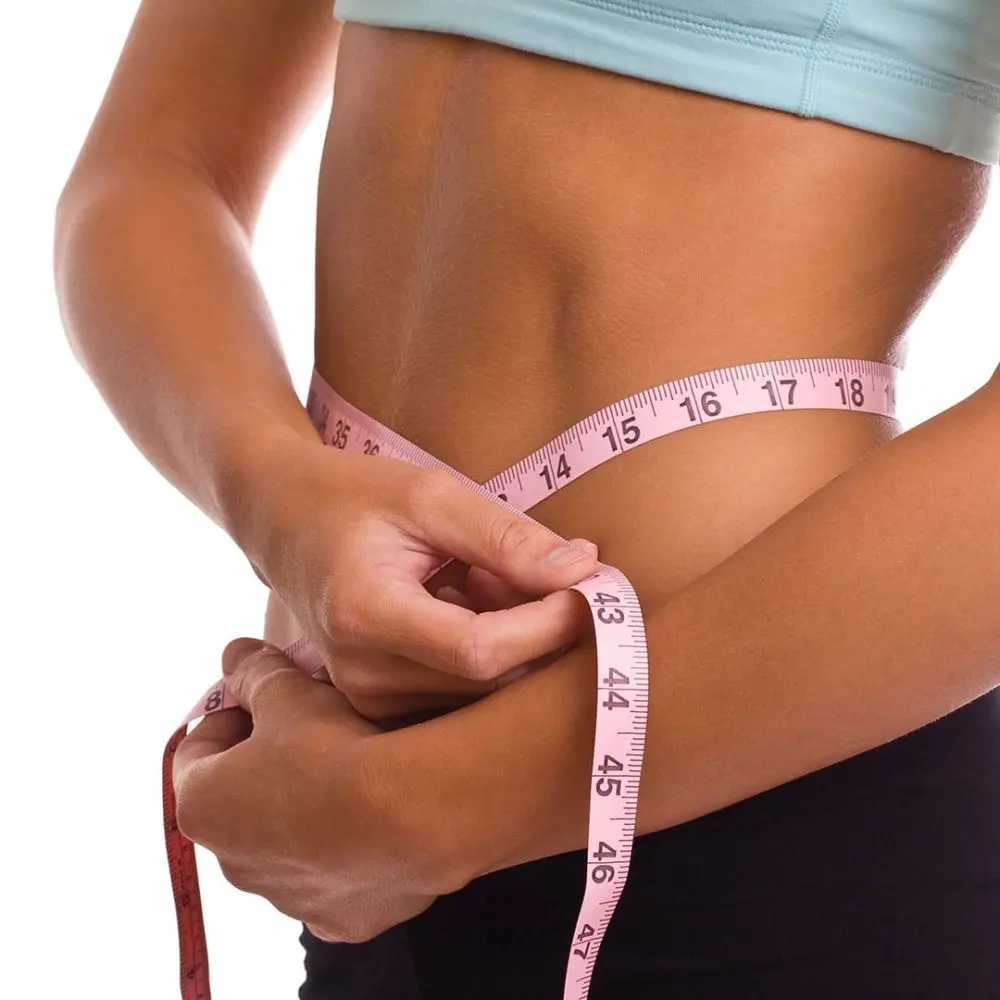
Intermittent fasting isn’t just about when you eat — it’s also about what you eat.
Whether your goal is fat loss, improved energy, better digestion, or all three, the right foods during your eating window can make or break your results.
Here’s how to build the perfect intermittent fasting plate.
First, What Breaks a Fast?
- A fast is broken by anything that contains calories — especially carbs and proteins that trigger insulin, therefore glucose levels.
-
So when your eating window opens, it’s important to focus on nutrient density, satiety, and balance.
Best Foods to Eat After a Fast
Here are your top options for meals that:
- Replenish nutrients
- Keep blood sugar levels stable
- Support muscle retention
- Prevent binge eating
✅ High-Quality Protein
- Eggs, chicken, salmon, turkey, tofu, Greek yogurt
- Keeps you full and support your metabolism
✅ Healthy Fats
- Avocado, olive oil, nuts, seeds, ghee
- Helps with hormone production and satiety
✅ Low-Glycemic Carbohydrates
- Sweet potato, quinoa, berries, legumes, leafy greens
- Supports energy without spiking blood sugar
✅ Fermented or Gut-Supportive Foods
- Sauerkraut, kimchi, bone broth, kefir
- Helps with digestion and reduces bloating
Beside what to eat, What to Drink During a Fast (And During Eating Window)

Foods to Avoid During Your Eating Window
❌ Ultra-processed snacks
❌ High-sugar supposedly “keto” treats
❌ Excess refined carbs (white bread, cookies, pastries)
❌ Constant grazing — keep meals structured
❌ Sugary cold or hot beverages – alcohol drinks
These can cause blood sugar crashes, cravings, and undermine fasting benefits.
How to Structure a Day of Fasting-Friendly Meals
Sample of a meal structure for a 16:8 Intermittent Fasting Day:
12:00 PM (break-fast):
Grilled salmon + quinoa + arugula + avocado + olive oil dressing
3:00 PM (snack/light meal):
Hard-boiled eggs, cherry tomatoes, almonds
7:30 PM (final meal):
Roast chicken + roasted sweet potatoes + steamed broccoli + ghee
Other Nutrients That Help During Fasting
- Magnesium: Supports sleep, energy
- Sodium/potassium: Prevents headaches, fatigue during fast
- Collagen or bone broth: Gut support, especially when refeeding
How to Adjust for Fat Loss or Muscle Building
- For fat loss: Emphasize lean protein with a high volume of leafy vegetables
- For muscle: Slightly increase carbs post-fast with strength training [exercice article link here]
Client Tip: Eat Once, Eat Right
I coach many clients who struggle by breaking a fast with empty carbs. Once we add structured, whole-food meals with enough protein and fat — cravings disappear, and progress accelerates!!
Conclusion: What to eat With Intention, Not Just Intervals
Fasting simplifies your schedule. And food quality is what drives real transformation!
Fasting works with a combination of habits, food is one but not only, read more about it in this coming article – Why Fasting Alone Isn’t Working — The Missing Piece Most People Overlook.
Do you need Support With Your Intermittent Fasting Meal Strategy?
Let’s personalize your fasting and food combo for your metabolism, lifestyle, and goals!



